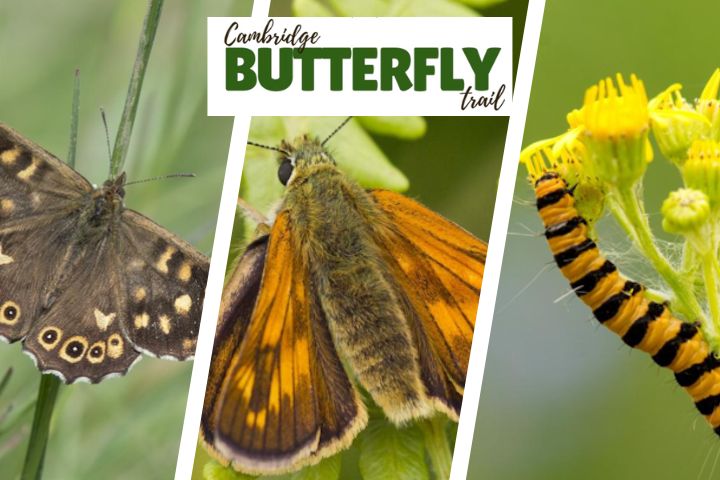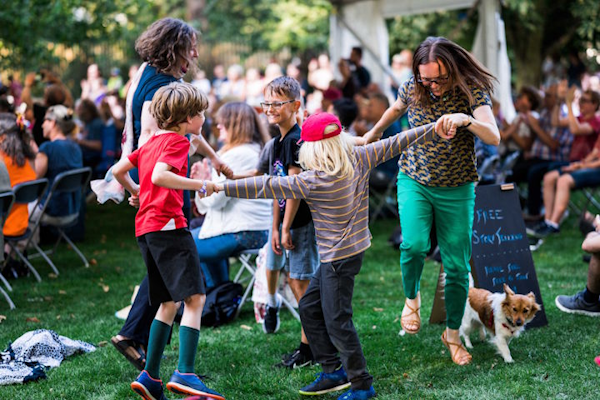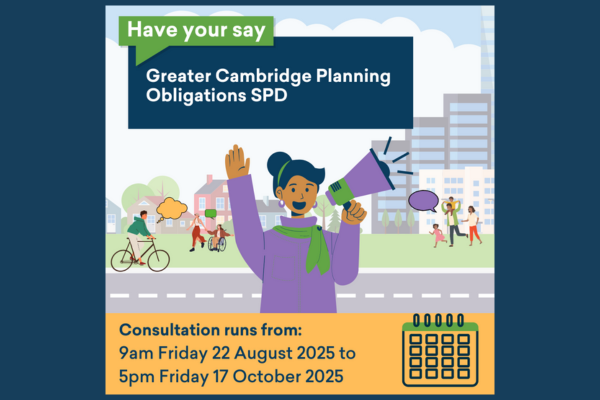The Greater Cambridge Shared Waste Service (GCSWS) between South Cambridgeshire District and Cambridge City council empty residents' bins. This means that we are the waste collection authority.
Once collected, our bin lorries drop off recycling and waste at waste transfer stations. This is the case for all three of the waste streams that we collect – that is material inside blue, green, and black bins.
Waste disposal authority
Cambridgeshire County Council is the waste disposal authority. This means that Cambridgeshire County Council hold the contract for the onward processing or disposal of green and black bin waste.
The waste collection authorities (including Greater Cambridge Shared Waste) within the Recycle for Cambridgeshire and Peterborough partnership jointly procure the contracts for the processing of blue bin recycling materials as part of a strategic partnership. Each waste collection authority then has their own recycling processing contract.
Blue bin - recycling
Blue bin lorries collect mixed recycling. When the blue bin lorries are full, the mixed recycling is collected from a transfer station in Waterbeach and taken to a sorting plant, called a Materials Recovery Facility (MRF) at Re-GEN Waste, in Newry, Northern Ireland.
Once at the MRF, a variety of magnets, eddy currents (reverse magnets), size-sorting equipment and conveyor belts separate the different materials. The materials are then baled and sold to processors who melt, pulp or crush them to make new products.
Our contract specifies that UK markets should be given preference where possible. Between April 2023 and March 2024, 82% of the recyclable material that the Greater Cambridge Shared Waste service collected was sent to UK re-processors for recycling. For plastics, this figure was 100% with no plastic leaving the UK.
The remaining material (18%) is large cardboard and some mixed paper which was exported. This is fully tracked in accordance with strict guidance from the Department for Environment, Food & Rural Affairs (DEFRA). This is recorded on the national Waste Data Flow website. Materials are only sent to sites which have a permit to recycle them legally.
Paper and cardboard are sorted into different grades and sent to mills to be pulped and made into new paper and card products.
Glass can be melted and used to make new bottles if it is unbroken when it reaches the Amey centre. The rest is crushed and used as aggregate in construction projects, or as filtrates in filter beds.
Cans are separated into aluminium and steel. Then they are melted by processors to form ingots, which are sold to manufacturers who can make anything from new drinks cans to aeroplanes.
Plastic bottles, pots, tubs, trays and bags are sorted to separate the different polymer types. They are then shredded and cleaned, then melted into pellets. These are sold to manufacturers to make new plastic packaging, garden furniture and even fleece jackets.
Drinks cartons are pulped and the paper parts are used to make strong cardboard cores for industrial applications, like factory rolls of paper, plastic film or yarn.
Textiles from recycling points are sorted and reused, raising money for the charities that provide the bins. Most are reused in the UK, but some are sent to Africa or Poland.
Food and garden waste from your green bins
Garden and food waste is put through an intensive fast-composting process, and the resulting soil conditioner is sold for local agriculture. You can collect some free of charge from Thalia Waste Management, Waterbeach, to use on your garden.
Non-recyclable rubbish from your black bins
Black bin waste which is not recyclable is taken to the Thalia waste-management centre near Waterbeach. Find out more information on the Cambridgeshire County Council website.
Recycling and waste statistics
We measure the amount of household rubbish and recycling we collect by weight.
Weight of recycling and waste collected
Between April 2023 and March 2024 we collected:
- 52,505 tonnes of general waste (black bins) from 129,560 households – an average of 405kg per household.
- 22,498 tonnes of recycling (blue bins) from 129,560 households – an average of 174kg per household.
- 30,005 tonnes of garden and food waste (green bins) from 113,742 households – an average of 264kg per household.
| Collection | 2019/20 | 2020/21 | 2021/22 | 2022/23 | 2023/24 |
|---|---|---|---|---|---|
| General waste | 50,221 | 53,182 | 53,076 | 52,179 | 52,505 |
| Recycling | 24,078 | 26,369 | 23,523 | 22,848 | 22,498 |
| Garden and food waste | 28,175 | 28,789 | 30,623 | 26,166 | 30,005 |
Recycling rate
The recycling rate shows how much you put into your blue and green bins, as a percentage of the total weight of recycling and rubbish we empty from all bins.
| Date | 2019/20 | 2020/21 | 2021/22 | 2022/23 | 2023/24 |
|---|---|---|---|---|---|
| April to June (Q1) | 55.1% | 51.17% | 53.56% | 52.02% | 54.08% |
| July to September (Q2) | 53.28% | 54.2% | 54.17% | 48.39% | 52.52% |
| October to December (Q3) | 49.08% | 50.12% | 50.25% | 50.39% | 48.03% |
| January to March (Q4) | 45.36% | 47.69% | 46.1% | 45.52% | 44.08% |
| Yearly total | 50.99% | 50.91% | 50.5% | 48.92% | 50% |
Bins emptied on time
The table below shows the percentage of bins that we emptied on their scheduled day. As well as the recycling rate, we use this to measure the performance of our waste service.
| Date range | 2019/20 | 2020/21 | 2021/22 | 2022/23 |
|---|---|---|---|---|
| Yearly total | 99.82% | 99.84% | 99.72% | 99.71% |



